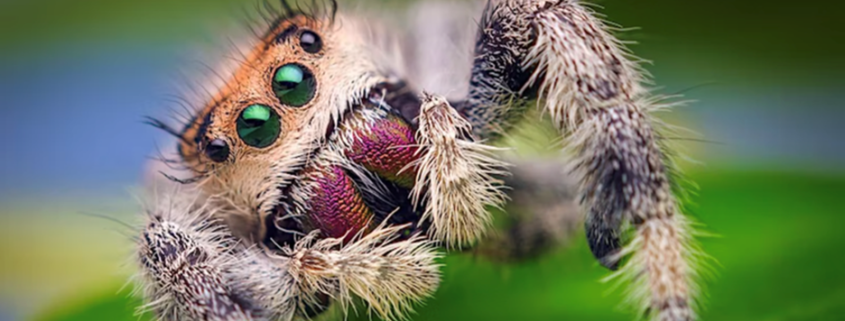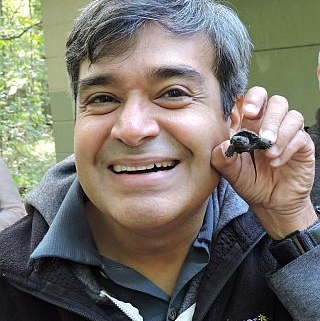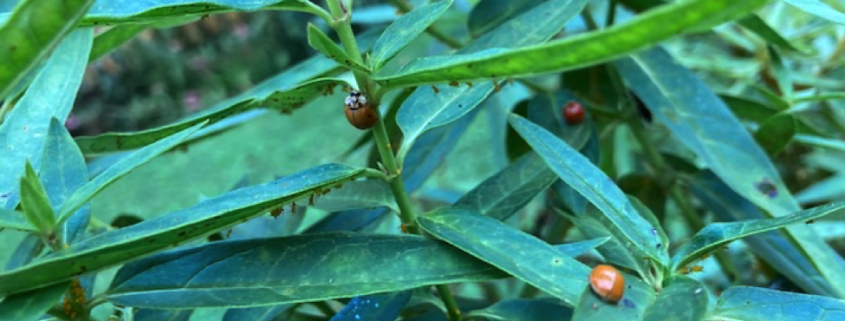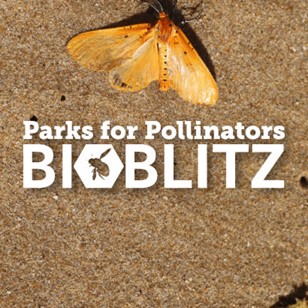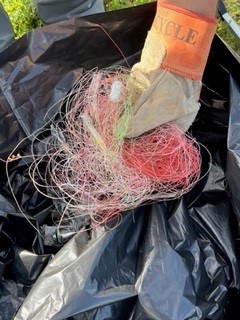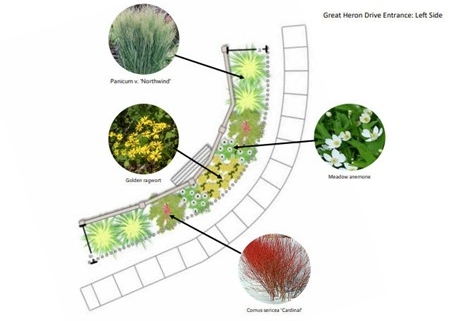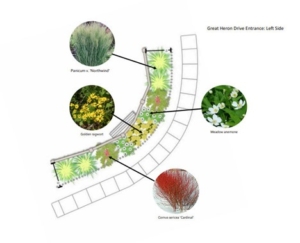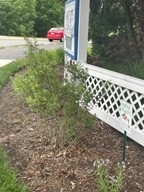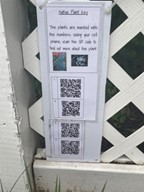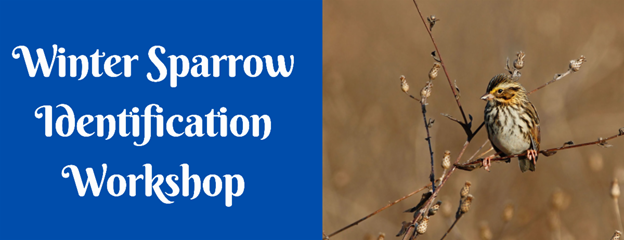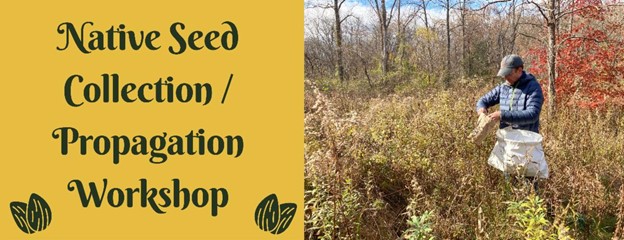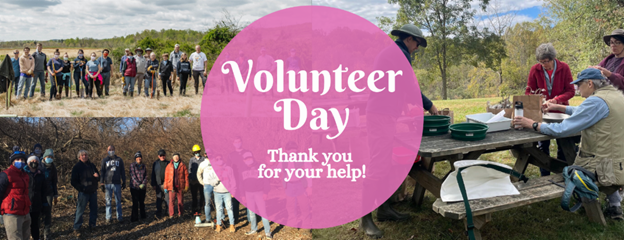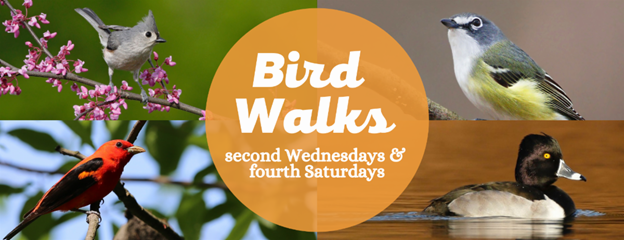Photo: FCPA, Susan Laume
Article from the Fairfax County Park Authority, Park News September 7, 2022
Flying a kite seems simple, but there are strings attached to this fun activity. If you fly a kite and leave behind kite string filament, you may be responsible for injuring or trapping wildlife. You may also impede park maintenance and damage equipment, and you may even potentially injure people who get tangled in kite string.
This summer, there have been groups and individuals flying kites above Laurel Hill Park, the Central Green and Laurel Hill Golf Club. Generally, kite flying is a welcomed activity and fairly benign; however, over the past few months, several incidents have occurred that cause concern.
Kite string filament is being found in trees and on the ground. Park patrons, wildlife managers and Park Authority staff are regularly documenting harm to birds, reptiles and other wildlife caught in kite line. FCPA site maintenance expenditures are rising due to kite string being wrapped up in mowers and other site-specific vehicles. Animal Control has been called on occasion to free animals trapped by the line and tend to their injuries. Even people can be at risk of injury while pulling the string out of trees or running into kite filament dangling from trees.
So how can you assist in solving this problem? The Fairfax County Park Authority is in the process of developing signage to communicate kite-flying rules and safety information, providing more trash cans in the area, and trying to contact any groups or individuals who may be flying kites at Laurel Hill Park.
Signage will remind groups or individuals flying kites that they cannot undertake this activity in any park if it is going to cause littering or damage to county property. Those with kites need to fly them in open areas only. They should fly them no closer than 75 feet to trees, power lines, light poles, parking, people or facilities. The use of monofilament line for kite string is prohibited. And, they must dispose of all kites or kite string if not taking it with them when they leave the park.
Once signs are in place, those witnessing violations of the kite-flying rules will be asked to contact police at the non-emergency number 703-691-2131.
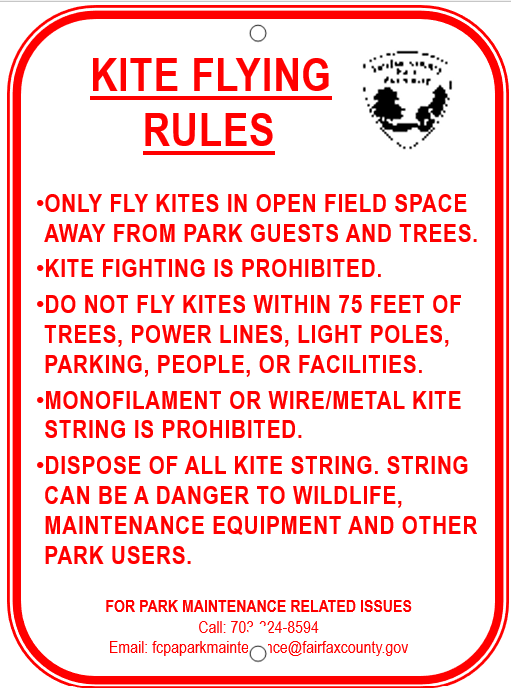
For more information, call the Park Authority Public Information Office at 703-324-8662.


